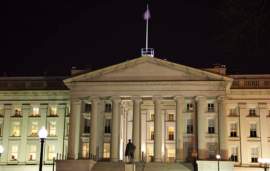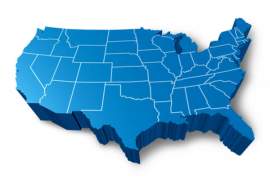
Federalism

A Look at Federalism in the United States
In the United States, government is recognized on both the state and national level. This relationship between the levels is known as federalism. While federalism in the United States responds to the political atmosphere, there still a balance between state and national government.
The first American governments after the revolutionary war did not use federalism. Prior to the U.S. Constitution, America was made up of colonies that were under the rule of England. While these colonies did cooperate with each other, particularly during the Revolutionary war, they were essentially self-sustained bodies of government.
The idea of combining these smaller divisions to centralize government as is found in federalism was heavily criticized. These colonies had fought against the oppression of England, which had a central government, similar to the national government suggested in the U.S. Constitution. However, soon after declaring independence, it was clear that individual states would not be able to sustain themselves without creating some form of a central government
Federalism helped unify the states without destroying all of their governing powers. For example, a centralized government allows the states to use the same currency. However, states would still be able to set their own laws as well, for example, whether a death penalty would be used in the state.
The U.S. Constitution was drafted, which carefully defined just how federalism would be and the relationship between the state and national government. It also worked to limit the national government’s power while protecting the rights of citizens.
While the type of federalism in the United States has varied throughout American history, there are still certain powers that will always remain so by the authority of the U.S. Constitution.
• Reserved Powers: These are specifically for just the state, such as police powers, licensing, education, conducting elections, regulating intrastate commerce, and health regulations.
• Granted Powers: These powers, sometimes called the enumerated or express powers are listed in Article 1, Section 8 of the Constitution. These consist of the powers that the federal government have. Some examples include regulating commerce, coining money, declaring war, establishing post offices, collecting taxes and making legislation that enforces the Constitution.
• Concurrent Powers: Powers that are held by both the state and federal government, for example taxation, setting up courts, creating and enforcing laws, constructing and maintaining roads, and certain spending.
While the powers of both the state and national governments are defined in the U.S. Constitution, there can be shifts to the balance in federalism.
For example, in the late 18th century, Americans were more concerned on strongly limiting the Federal government, but doing so made the Federal government effectively useless. It was necessary move away from the Federalist papers and to create a new government through the U.S. Constitution since states could not be expect to have objective and educated views on a national level.
The Federal government was given more power in the 19th century by Justice John Marshall who felt that the U.S. Constitution did not create defined layers of the government and portrayed this view in many of his rulings, such as how the Commerce Clause could be used by the Federal government as seen in Gibbons v. Ogden.
Justice Marshall’s attempt and strengthening the national government in federalism was slightly undone by Justice Taney, his successor who would felt that the national government was limited exclusively to the enumerated powers while the states would receive everything else.
Since the Regan administration up until the beginning of the 21st century, there was a push to return powers to the states from the Federal government, particularly through court decisions that evaluated the Federal government’s powers through gun possession, police powers, the Commerce clause, and agriculture.



















